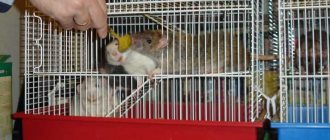In the spring, summer residents and rural residents have new concerns related not only to the garden. Many owners keep poultry for fattening or breeding on individual farmsteads. Beginning poultry farmers often encounter various difficulties when raising chickens at home. We offer you to understand in detail how to care for young chickens in order to get a healthy, strong and productive livestock.
When purchasing hatching eggs or chickens, it is important to consider the type of productivity (egg, meat, meat-egg) and the characteristics of the bird of the selected breed or cross.
How to choose
Perhaps this is the very first and most important question that all beginning farmers face. There is such an abundance of young animals at exhibitions and professional poultry farms that it is very easy to get lost. We have prepared some practical tips.
Daily allowance
There are several rules that you need to follow when choosing newborn chicks:
- Look inside the box. The chicks should be evenly distributed on clean bedding. It's a bad sign if they huddle together or sleep with a lethargic appearance.
- The babies stand confidently on their paws, their eyes are clear and sparkle. The beak is clean.
- There should be no feces stuck to your butt. This indicates a problem with the feed or an infectious disease.
- The chickens are active, they do not scream, but squeak.
- When you pick up the bird and turn it over on its back, the legs look symmetrical and do not spread out to the sides.
- Try to pick up each chick and examine it carefully.
Weekly
It should be noted that birds at this age are most vulnerable. Therefore, the issue of choice should be taken as responsibly as possible. In addition to all the above parameters, pay attention to the following signs:
- Birds must be active.
- The plumage is fluffy, without traces of droppings and dirt.
- The head is straight, the stomach is soft.
- Individuals respond well to sounds; they already have a pecking reflex.
Menstruation
Individuals of this age are extremely unpopular for breeding. But it is during this period that birds already have good immunity to infections. There are no new selection rules; attention must be paid to the same characteristics as when choosing younger individuals.
Growing time
The profitability of raising broilers for meat determines the duration of their maintenance. The optimal period is up to 2 months. After the seventh week of bird growth, weight gain slows down, although broilers consume the same amount of feed as in the first stage of life.
To make matters worse, in the third month of cultivation, the pectoral muscles quickly grow and become fat. In order for chicks to gain sufficient body weight in the shortest possible time, it is necessary to feed complete broiler mixtures, thanks to which chicks can reach a weight of 2.8 kg in 5 weeks.
Broilers grow fastest between the first and fourth weeks of life, after which the growth rate decreases.
How to determine the sex of a chicken
For an inexperienced farmer, this issue can cause serious difficulties, but you need to understand it. If the priority is raising poultry for meat, then cockerels are needed, and if eggs are raised, then hens. There are several ways to understand who is in front of you:
- Cytogenetic, in which the set of chromosomes is examined. This is the most accurate and expensive method. Most often it is used on rich farms.
- Based on breed. The simplest of all. There are certain breeds in which the chicks vary in color. For example, Leghorn and Legbar laying hens are the same color, and cockerels are striped.
- On the wings. Males, as a rule, have longer flight feathers and a wider wingspan. In this case, the color of the feathers for the first three days will be much lighter than that of chickens.
- By the legs. Some believe that future males have wide legs from birth, as well as a long stride. When male chicks walk, they pull their legs forward as much as possible, as if they are marching.
- Let's look at the reflexes. Some believe that if you take a chick by the legs and lower it head down, the cockerels will try to get up and understand what is happening, while the hens, on the contrary, will pull their heads into their shoulders. More details about other reactions in the table:
If you are already a teenager, then pay attention to their behavior and appearance. Laying hens feather their feathers much faster than cockerels, but the latter look larger. In addition, roosters have a bright temperament. They are often aggressive, fight and can even attack humans.
We talked in more detail about how to distinguish a rooster from a hen in chickens here.
Why do I use coccidiostats?
I raise egg hens for myself. Therefore, I try to use as little chemicals as possible. But our modern life is impossible without chemistry: the grain that we buy for birds is grown in fields using all kinds of chemicals: fertilizers, pesticides, insecticides.
Obviously, it is impossible to grow environmentally friendly products, so I allow the fight against coccidiosis on my farm using veterinary drugs.
Grain may contain coccidiosis pathogens that enter the soil from manure. They can live in soil for up to three years. So the grain we buy may be contaminated. Parasites are also spread by sick chickens, wild birds, rodents, beetles, ticks, flies, and cockroaches. Pathogens are transferred from farm to farm on people's shoes.
It is impossible to completely eliminate the infection of birds with coccidia, so I use feed that already contains drugs against coccidiosis. If there are no coccidiostats in the starter feed, then I give them separately.
The most important thing is the high immunity of chickens, which is achieved by good feeding and excellent living conditions. And, of course, good material for incubation is important: eggs must be obtained from healthy chickens.
When purchasing grown-up chickens, check whether they were given vitamin complexes, antibiotics, or other medications. Specify the scheme, feeding technology, what medications were used for the chicks, what they were fed.
What signs are used to determine age?
If the farmer raises the chicks himself, then determining the age of the bird will not create difficulties. It is important to be able to determine the age of birds when you plan to purchase individuals from other breeders. It is noteworthy that the age of an adult chicken is much more difficult to determine than a chick. There are several ways.
By the beak
The simplest method that can tell you quite effectively about the approximate age of a bird is determination by its beak. Chicks up to one year old have a yellowish beak color. At the same time, the surface is smooth and shiny. With age, the color of the beak changes, becoming darker, with a grayish tint. Also, chips and detachments of plates begin to appear on it, and it itself becomes matte with irregularities.
By scallop
You can also distinguish an old chicken from a young one by its comb. In a young individual, this part of the body is warmer and has a bright color. The comb of an adult chicken is cold to the touch and pale in color. With age, metabolic processes in a bird's body slow down, blood circulation deteriorates, so the comb loses its properties. Thus, if the bird in front of you has a bright comb color, but the comb itself is warm, then it is probably still very young and productive.
On the legs
The legs of a young bird, like its beak, have a pronounced yellowish color. The surface should be smooth and the scales should be tightly fitting, then the bird can be considered quite young and promising. Over the years, the color fades, the scales peel off, and the smoothness disappears. The claws also have a more attractive and smooth appearance in young chickens.
By plumage
It is quite difficult to understand how old a bird is by its plumage, but many farmers also use this method. For example, in a young individual, the feather (not during the molting period) fits tightly to the body, has no bald spots, and is soft and smooth to the touch. In an older individual, on the contrary, there may be bald patches, and the feathers have an unkempt and shabby appearance.
Temperature standards
Normal growth of newborn chicks is achieved by providing a balanced diet and comfortable warm conditions. A feature of newly hatched chicks is their high sensitivity and vulnerability to external conditions. A damp floor or a small draft can lead to irreversible consequences. In this regard, the chickens are dried as quickly as possible after hatching from the egg, creating conditions for them that would be provided by a hen. Temperature indicators for keeping chickens throughout their life are not constant, they change downward. It should be indicated what the temperature standards should be for chickens of different ages.
From birth to 7 days
This is the most crucial period for the poultry farmer and his feathered pets. Chicks are so vulnerable and weak in the first week of life that a loss of 1-5% of the entire population is considered normal. Young animals vitally need warmth and round-the-clock illumination, which activate life processes. The optimal temperature in the first 5 days is considered to be 30-32 C, by days 6-7 you can reduce the temperature to 26-27 C. It is advisable to install a thermometer, which should be fixed at the approximate level of the baby’s chest.
Careful observation of them will allow you to draw a conclusion without a thermometer whether the ambient temperature is comfortable for week-old chicks. If the body is cold, the chickens will huddle together in the corner of their home, and the outermost chicks will try to crawl into the center of the huddled relatives. If they are hot, the chicks demonstrate this by spreading their wings, frequently opening their beaks, the birds puff up their down, and also quickly and greedily drink water. If the ambient temperature is normal, the chicks show active behavior, do not sleep in a group, and drink enough water.
For individuals older than a week
As they grow, the external temperature is still important for the chicks, but “greenhouse conditions” are no longer required. It is recommended to lower the temperature gradually, by 1 - 0.5 degrees every 2-3 days. We present in the table the norms of temperature indicators for two-week-old chickens and older individuals.
| Chick age | Maximum temperatures, C | Minimum temperatures, C |
| 7-10 days | 29 | 24 |
| 11-15 days | 27-28 | 22-23 |
| 16-20 days | 26-27 | 21-22 |
| 21-30 days | 23-24 | 19-21 |
| From 1 to 2 months | 22 | 15-19 |
| Over 2 months | 19-20 | 10-12 |
It should be borne in mind that these indicators are averaged for laying chickens and broiler chickens. Laying hens will tolerate a slight decrease of 1-2 degrees in these temperature indicators in the room (without drafts), especially at one month of age and beyond. And for broilers it is better not to lower the minimum values, since in a cool room their growth and weight gain slows down and even stops.
What to choose: a hen or an incubator
They breed offspring using incubators or brood hens. Each method has both positive and negative sides.
How to raise chickens under a broody hen
Not all chickens can take on this role. Crosses simply by their nature cannot be hens, and some breeds have also lost their brooding instinct. Several factors indicate that a hen is ready to become a hen:
- she begins to try on and sit down in dark places;
- avoids the rooster;
- feathers fall out on her belly, with which she insulates the nest;
- when the eggs appear, she begins to protect her offspring.
The hen considers any chicks to be her children, regardless of species or breed. The farmer can be calm about the young animals. The chickens won’t have to be warmed at night or taught to eat.
It should be noted that good quogs are kept alive. When properly maintained, they can incubate offspring for several years. The place for the nests should be determined in the farthest part of the barn so that other birds cannot harm it.
How to Use an Incubator to Raise Chickens at Home
Growing devices come in different types:
- automatic, when the process is fully automated;
- manual, when you need to turn over the masonry yourself;
- mechanical, having a lever with which the eggs move around their axis.
The most convenient device, of course, is the first. The main advantage of incubators is that you do not need a bird to produce offspring. You just need to purchase eggs, place them in the unit and that’s it.
In addition, even the smallest models can hold many more eggs than the largest hen can hatch. You will also avoid situations where the quonset crushes the offspring. All eggs laid in the device, provided they are fertilized and there is no hypothermia, will eventually become chicks.
You will be interested to know: which incubator is better - “Cinderella” or “Laying Hen”.
Content preparation
The success of the enterprise depends on how competently you implement the plan for the further hatching of young animals. Raising laying chickens requires attention to many details.
In cells
If we are talking about industrial poultry farming, then this is the only way to get marketable eggs. The cages are equipped with automatic mechanisms for feeding, manure removal and egg collection. Also, thanks to the invention, it is possible to concentrate a large population in a small space. But in Europe they abandoned such a scheme, since it was recognized as inhumane.
It is believed that birds should be kept in spacious rooms and be able to go out for a walk. In addition, birds in cages are more susceptible to various diseases. This is due to the lack of access to the sun and a large concentration of birds in a small room.
Some household farmers make their own multi-tier cell batteries. The structures are low cost. But in such a situation, the poultry house itself adjusts the lighting, temperature and ventilation.
On bedding
To do this, use only dry and clean hay or straw. If a crushed egg appears, it is removed immediately. When you realize that the floor is cold or there are rodents in the chicken coop, then move the nest to a low height or hang it in a box from which there will be a ladder. Also, do not forget to regularly inspect your chicken's feathers for parasites.
Choosing the right diet for adults
After the chickens have been with you for 3-4 months, they will begin to mature and lay eggs. Gradually, all chickens will become laying hens, and they require a special diet. Unlike broilers, which are raised for meat, laying hens require a balanced feed that will contain not only nutrients, but also macroelements necessary for the proper development of the chicken. The eggshell consists almost entirely of calcium, which is taken from the chicken’s body - it must be constantly replenished and the bird must be given a lot of vitamins.
If the shell becomes soft, this is the first reason indicating a lack of vitamins, more precisely, calcium. You need to feed the chicken Rothstar or Foros. The traditional diet of each laying hen is quite varied, it should contain: fish meal, phosphates, cake from sunflower, rapeseed and soybeans, a grain mixture of barley, wheat and rye. It is best if you add 200-300 grams per month of feed chalk - this is one of the most useful minerals for the formation of eggshells.
You can also buy nutritional mixtures that have been developed specifically for laying hens - they contain the optimal amount of the most necessary feed. This food is simply ideal for them, but it is quite expensive - 450-500 rubles per 50 kg bag. When purchasing a large batch (from 1 ton), you can save up to 50% of money. If you do simple arithmetic calculations, you can determine that, on average, it will cost 3 rubles a day to maintain 1 chicken per year. Whether it is worth using complete combined feeds or trying to feed cheaper mixtures that you can put together yourself - each poultry farmer decides for himself. But, in any case, simply feeding grain will not work - adding bone meal, fish, chalk, and minerals is necessary, otherwise the chicken will lay much less eggs, and the egg size will be smaller than expected.
Features of care
It is important to create comfortable conditions so that the future livestock is healthy. The presence of flies should be monitored. Treat the chicken coop and the birds themselves for parasites. Be sure to clean and ventilate the place of detention every day. Make sure there is a container with ash or sand in the chicken coop.
Light mode
The presence of sufficient light is one of the important factors determining productivity. Experienced poultry farmers note that the highest performance is achieved with 15 hours of daylight. Therefore, it is necessary to accustom a laying hen to light at 4.5 months, that is, by the time she is ready to lay her first eggs. But universal breeds are characterized by late early maturity.
All changes in daylight hours directly affect egg production rates. This factor also determines the quality of development of young animals.
The optimal light intensity in the room is 6 W/m2. The distribution should be uniform over the entire area. Place the lamps at a height of 2 m from the floor.
We recommend that you familiarize yourself with: Laying hens of the Rhodonite breed.
Temperature
The permissible temperature for breeding laying hens is 5-28 °C, the optimal temperature is from 10 to 25 °C. To monitor this data, there must be a thermometer in the chicken coop.
Feeding
Not all farmers buy already grown individuals; some prefer to breed chicks themselves, receiving eggs from already proven poultry. If the diet is not structured correctly, then in the first days the chicks may die, since the digestive system is still very weak. That is why it is important to provide the chicks with proper balanced nutrition from the first day.
How to properly feed newly hatched birds?
As soon as the chick is born, it does not yet experience hunger - the nutrients it received while sitting in the egg will last it for several more hours. During this time, the kids should dry out and warm up under a special lamp. As soon as the fluff has dried and the chicks are firmly on their feet, they should receive their first portion of food.
Adult food may also be suitable for laying hens, but it must be finely chopped and only then offered to the bird. The optimal diet on the first day is fine corn grits, which can simply be scattered on the floor. It is imperative to offer children a sufficient amount of water or a 3-5% glucose solution. It is permissible to add vitamin C to your drink (10 grams per 10 liters of liquid).
Feeding day old chicks
Day-old chickens already need more complex feed, so you can add wheat, barley, semolina, oatmeal or millet to the corn grits. Many farmers feed birds in their early days with boiled and finely grated chicken eggs, but recent studies have shown that such a diet does not have the desired positive effect on the bird’s digestive system and even provokes the development of various problems in the future.
It is important to carefully monitor that each chick is fed. If a bird is identified that does not peck at food, then it is best to remove it from the brood and feed it individually. Day-old young animals should receive food every 2 hours. It is recommended that 2-3-day-old chicks introduce dairy products into their diet, namely yogurt and cottage cheese. They can also receive green food, such as finely chopped young nettles, clover, green onions, and dandelions.
The role of vitamin supplements
Not all vitamins can be supplied to chicks through food, which is why it is important to provide additional support using vitamin supplements. Today, you can use both a natural method of delivering essential vitamins to the bird’s body, and specially developed preparations. Without vitamins, the bird will not be able to absorb minerals that are necessary for normal egg production.
It is worth making sure that the bird has enough vitamins A, E, B, K, since they directly affect growth rates, the formation of muscle tissue, vision development, plumage, and regeneration. Also important are vitamins C, H and group B, which are indispensable in the body’s biochemical reactions, in energy exchange processes, and form the basis of the digestive, immune and cardiovascular systems.
Important points when shaping the diet of young animals
Raising layer chickens requires a slightly different approach than raising broilers. For them, the feed should be balanced in such a way as to increase egg production and improve egg quality. To do this, it is imperative to include a sufficient amount of protein, minerals, vitamins and carbohydrates in your diet. The best thing is to use ready-made balanced feed for laying hens.
What to feed
Feeding chicks is an important aspect of their proper development and growth. Experts recommend feeding birds with special dry food, which is sold at any veterinary store. Start feeding the chickens with starter feed, gradually moving to regular feed.
Age of the chicken What to feed 1-5 days During the first week, chickens eat very often - it is important to feed them every 2 hours with cottage cheese, a boiled egg, mixed with semolina or corn grits at the rate of 1 egg or 50 grams of cottage cheese, combined with 50 grams of cereal, per 10 birds . It is useful to give the bird rolled oat flakes mixed with dry milk at the rate of ¼ of the food volume
On the 3rd day, add chopped greens to the diet of future hens and cockerels. If the season of greens has not yet arrived, then add herbal meal to your food. 7 days Add sour milk or broth mash. 10 days Add grated carrots, zucchini, and boiled potatoes to the above products. Also add crushed eggshells and chalk to the chicken menu. 20 days Now the birds can eat anything: add waste from cutting fish or meat, and meat and bone meal to the diet. On average, the amount of food for chickens increases daily by 10%.
If you don’t want to buy ready-made dry food for chickens, then prepare your own grain mixture for babies - it’s easy. It is enough to mix wheat (35%) and corn (35%) with oats (10%) and barley (20%).
Feeding the chickens
A well-fed and happy chicken has a full goiter, which is checked after feeding. As a rule, after a hearty lunch, the babies sleep.
Well-fed chicken in the palm of your hand
Don’t forget about vitamins for chickens: they can be bought at veterinary pharmacies and added to the feed. It is also useful to give fish oil to birds: it is given in the morning along with grain.
Chiktonik (vitamins) for birds
Kefir, yogurt or whey are very useful for birds: they should be given early in the morning.
Make sure that birds always have clean and fresh water in their drinking bowls, and that older chicks also have bowls with sand or gravel - they are necessary so that food can grind in the birds’ stomachs. Chicks will peck at gravel or sand as needed.
Plate with sand for chickens
Pay attention to how the chickens eat: those who are weaker, as a rule, cannot break through to the feeder or drinker. Such birds are fed separately for some time, separated from their brothers
Over time, they will gain strength and will be able to resist their more lively companions.
Grown up chickens - photo
Chicken diseases and their prevention
The main reason is weak immunity. Therefore, newly hatched chicks need special attention and care. Don't forget that it is important to maintain cleanliness and correct temperature conditions. Diseases can be identified by several signs:
- lethargy;
- refusal to eat;
- liquid droppings with blood;
- throwing back the head.
The most common infectious diseases are salmonellosis, pasteurellosis and laryngotracheitis. All these ailments are very dangerous and if proper assistance is not provided in time, the livestock will die. Birds also suffer from a lack or excess of vitamins in the body, rickets and atrophy of the muscular ventricle.
If hygiene requirements are not followed, parasites may appear, which are also life-threatening. Therefore, it is within the power of the farmer to take a number of preventive measures:
- protect chickens from adults;
- take care of cleanliness and proper ventilation;
- observe temperature and light conditions;
- carry out vaccinations in a timely manner;
- maintain a balanced diet.
Remember that preventing a disease is easier than treating it. Don't be lazy and inspect the livestock every day. As soon as you suspect alarming symptoms, isolate the birds.
Common beginner mistakes
Even after studying a lot of materials and consulting with experienced poultry farmers, beginners often make mistakes. Among the most common:
- Bad chicken coop. Rodents and predators should not be able to get into it. Therefore, protect ventilation openings, do not leave gaps under the door, and do not leave chickens outside at night.
- Chickens do not need water containers that are too deep. Some people may simply drown in them.
- Metal garbage, various poisons. Keep it clean. There should be no dangerous objects or substances on the territory of the barn and walking yard.
- Do not mix chickens of different sexes and breeds in the same room. This can cause serious conflicts.
- Monitor the health of your birds. Carefully inspect absolutely all birds.
When can young animals be released outside?
Chickens of egg and meat-egg breeds can begin to be accustomed to walking at the age of 2 weeks. Walking is allowed if the weather is warm and dry. At first, the birds walk for 30 minutes, then the time spent outside is gradually increased.
Mother hen with chickens on the run
The walking area should be protected from the north wind and at least partially equipped with a canopy. It is important to ensure that the chickens do not overheat in the sun. If this happens, the birds are placed in a cool place and given water to drink.
Reference. Keeping chickens of meat breeds without walking allows you to limit physical activity. However, it is also useful for them to breathe fresh air and receive a portion of ultraviolet radiation to prevent rickets. Farmers move the birds' cages outside when the weather warms.
conclusions
- Choose young animals very carefully. Give preference to day-old babies. Ask the seller for permission to inspect each chick.
- Determining gender is not easy. The main thing is to understand the breeds. Perhaps you have just the kind of chicken that initially has a difference in plumage color.
- An incubator for gestating eggs is much more convenient, but after the babies hatch, you will have to build special brooders.
- A good hen will not only hatch the eggs, but also take care of their future life.
- If you do not have industrial egg production, it is better to keep birds on litter. This is more humane and requires minimal financial costs.
- Care for laying hens properly. Their productivity depends on this.
- When raising laying chickens at home, pay special attention to the health of the birds. If you do not suspect something is wrong in a timely manner, then in a matter of days you can lose all the individuals.
Choosing the best egg-laying breeds
If you want to produce a lot of eggs and make extremely profitable production, then you need to choose the right chicken breed. It is not always worth choosing only from foreign options, since domestic poultry farmers also raise decent breeds of chickens, which are in no way inferior in egg production to the best “Europeans”. Let's consider the most acceptable options for our climate zone:
- Laying hens Loman Brown. One of the most popular breeds in Russia and neighboring countries. They have not given up the first positions in the rating for decades and with their egg production they surprise every poultry farmer - about 315 eggs per year. Sexual maturity of an individual occurs in 4-5 months, after which the chicken is productive for 2-3 years, and the number of eggs laid will increase with each month. They are resistant to diseases and have very high vitality - almost all chickens survive (98% safety of young animals). The testicle is large in size - up to 80 grams, and one chicken consumes no more than 130 grams of food per day.
- Dutch Heisex laying hens are small individuals weighing only 1.5-2 kg, they reach sexual maturity after 120-130 days, after which they rapidly increase egg production over the course of 1 year. The egg production of white chickens is 290 eggs per year, gray and brown - 320 eggs. This difference is due to the fact that the former spend more energy on heating the body during the cold season, so they carry a little worse. The egg is relatively large - up to 65-80 grams, has a hard shell, which significantly increases its transportability.
- Pushkin motley. One of the most “bright” chickens, which not only lays eggs wonderfully, but also pleases the owner’s eye. Many people keep them only for decoration and variety of the household yard (especially since such decoration also brings good profit). The egg production of this species is 315 eggs per year, the weight of one egg is 75 grams. Chickens have a Nordic, reserved character - strong, stand firmly on their feet, walk importantly around the yard and do not fuss at the slightest noise. Survival of young animals is 99%, of adults – 95%. It is not recommended to combine this breed with another in the same area - the bird is proud, does not like company and can conflict.
- Kuchinskaya Jubilee. Versatile chicken - you can keep it for an omelet, or chop it into soup if necessary. One of the best meat-egg chickens , which lays up to 240 eggs per year and quickly gains live weight. The chicken already begins to please the owner with eggs at the age of 5-6 months (or immediately turns into a meat breed), and begins to lay small ones - weighing 60 grams. With proper nutrition and care, the survival rate of young animals is 99%; the variety is well acclimatized and feels great in any living conditions.
You need to immediately decide for what purpose you will keep the chicken coop, since the difference between egg-laying breeds and meat breeds is very large (up to 100 eggs per year). If it is important for you to obtain only a secondary product, then it is better to give preference to foreign breeds. If you also prefer to eat or sell chicken meat, then it would be better to give preference to meat-egg breeds that have an optimal ratio of weight and egg production.











